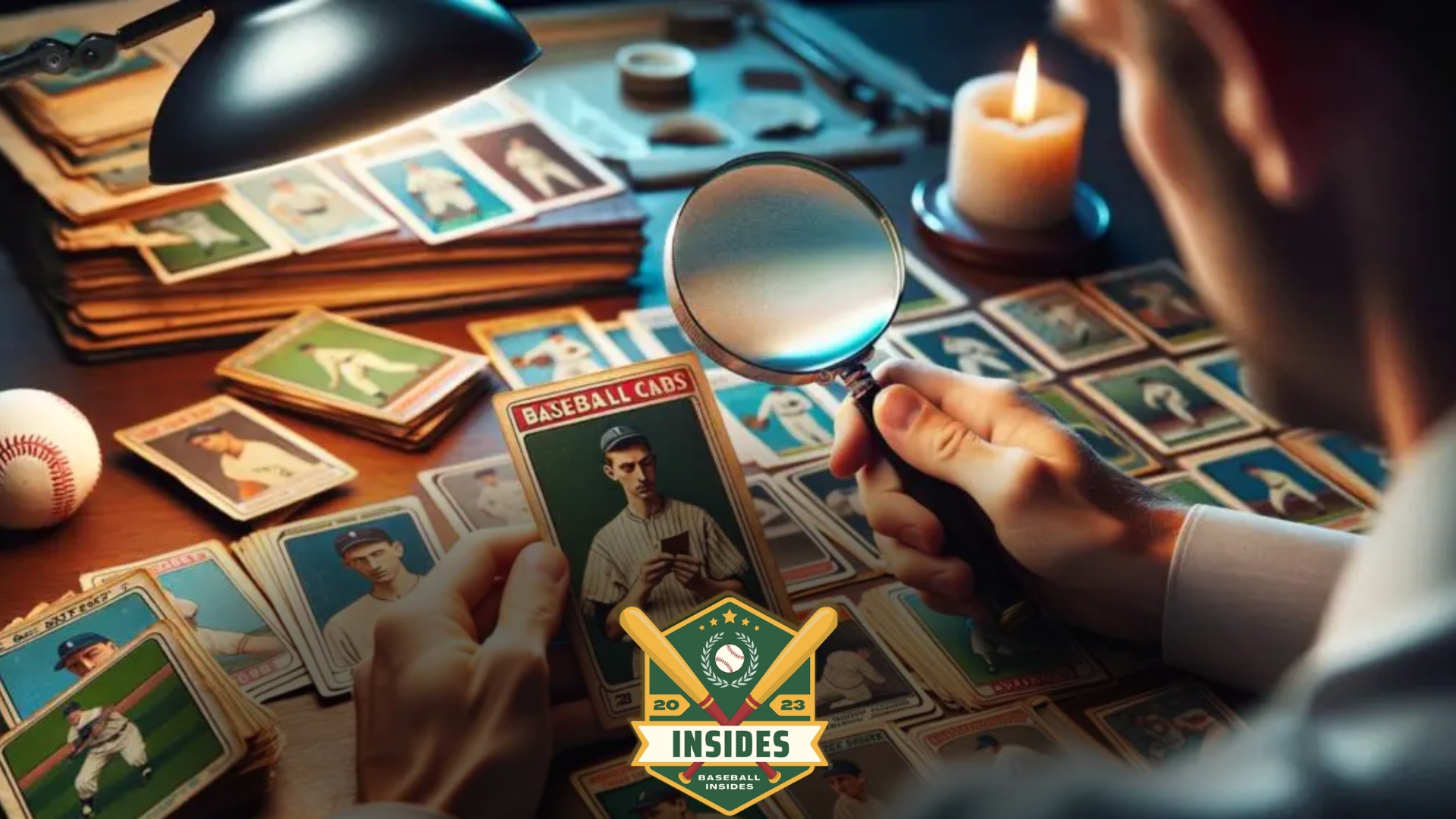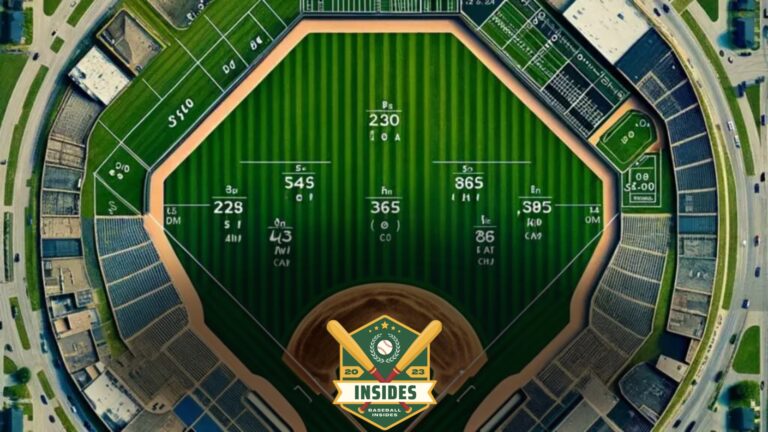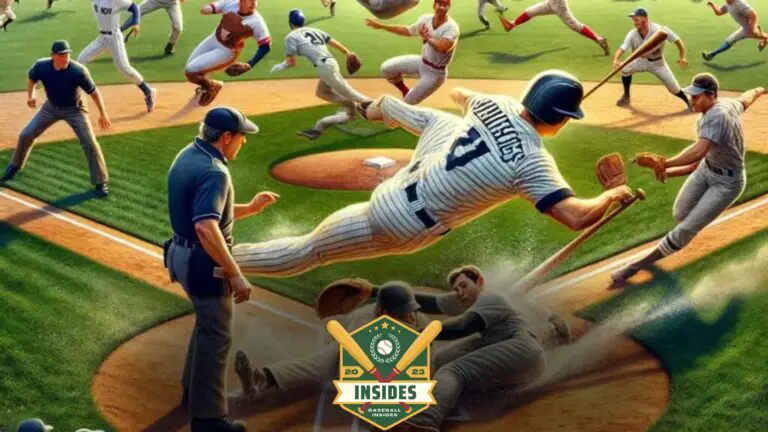
In this article:
To determine if baseball cards are reprinted, scrutinize their size, paper quality, color, and print clarity. Check for discrepancies compared to authentic cards from the same set.
Collecting baseball cards is an enduring hobby, blending the love of sport with the thrill of the treasure hunt. As the value of vintage baseball cards climbs, the market sees rising reprints—facsimiles of original cards aimed at deceiving the unwary collector.
Subtle differences in size and texture or slight variations in color and typeface can signal a reprint. Authentic cards usually boast sharp, defined printing and consistent hues that reprint fail to match.
Keen-eyed enthusiasts look for these details, understanding the characteristics that distinguish genuine memorabilia.
Discerning between real and reproduced cards ensures collectors maintain the integrity of their collections and invest wisely.
Spotting the Signs of Reprints
Collectors value original baseball cards as treasured pieces of sports history. Spotting reprints ensures authenticity and protects investments.
Identifying reprints is crucial for collectors and enthusiasts. Knowing the signs can save time and money.
Print Quality and Clarity
Original baseball cards boast high-quality prints with clear, crisp images. Reprints often fall short in quality. Here’s how to spot the differences:
- Sharpness: Check the image details. Originals show fine, sharp edges.
- Color Depth: Originals have vibrant, consistent colors. Reprints might appear faded or uneven.
- Alignment: Original cards have well-aligned graphics. Misalignment may signal a reprint.
| Feature | Original Cards | Reprints |
|---|---|---|
| Sharpness | Sharp edges, clear details | Possibly blurry, less defined |
| Color Depth | Vibrant and uniform | Can be faded or inconsistent |
| Alignment | Graphics well-aligned | May show misalignment |
Examine these attributes closely. Use a magnifying glass for better precision.
Inconsistencies in Card Material
The feel of the card matters as much as its look. Pay attention to these aspects:
- Card Stock: Feel the thickness and texture. Originals have consistent, high-quality stock.
- Gloss: Original cards may have a specific gloss finish. Reprints could lack this or overdo it.
- Cut: Examine the edges. Originals typically have precise, clean cuts.
Consider the card’s overall construction. Variations from the norm might indicate a reprint.
Analyzing Card Text and Typography
Detecting a reprint in the world of baseball cards often comes down to the small details on the card itself. One of the key areas savvy collectors look at is the card’s text and typography.
Subtle variations in font and alignment can be telltale signs that a baseball card might not be the original issue.
Font Variations
Paying attention to the font on a baseball card is crucial. Original cards from a particular set use a consistent font throughout. Look for these font-related red flags:
- Slight differences in font style: A reprint may have a slightly bolder or thinner typeface.
- Incorrect font type: Sometimes, a reprint will use a distinctly different font that doesn’t match the era of the card.
- Irregular font size: The text may be larger or smaller than on genuine cards.
Examine the names and statistics on the card closely against verified originals to spot these variations.
Alignment and Spacing Issues
How text lines up on a card can also prove its authenticity. The original printing process was precise. Here’s what to watch for:
- Off-center text: Text that isn’t neatly centered can signify a reprint.
- Uneven spacing: Look for inconsistencies in the space between letters and words.
- Alignment mismatch: Compare the text’s edge to the card’s edges. Any misalignment could indicate a reprint.
Study cards side by side for comparison. Authentic cards should mirror each other in text alignment and spacing.
Color and Image Sharpness
Determining the authenticity of baseball cards can be tricky. A clear giveaway lies in the color and image sharpness. Original cards from vintage eras often carry a distinct visual quality that reprints can struggle to match.
Let’s dive into how saturation, hue, resolution, and detail can signal if a card is a reprint.
Saturation and Hue Differences
Colors that seem too bright or too dull often hint at a reprint. Originals tend to have a consistent color palette specific to their production period.
Here’s what to look out for:
- Check the background color – it should not overpower the card’s image.
- Examine the uniform colors – authentic cards have true-to-life shades.
- Compare the card with a known original – look for hue variations.
Resolution and Detail Comparison
The finer details of a baseball card often reveal the truth. Here’s a checklist for a closer look:
- Fine print – Originals have crisp, clear text, even at a small size.
- Player images – Look for sharp edges and detailed facial features on authentic cards.
- Border resolution – Blurs and bleeding colors may indicate a reprint.
Use a magnifying glass to inspect the card closely. Originals will maintain high resolution even under magnification.
Age and Wear Marks
Determining the authenticity of baseball cards often rests on identifying age and wear marks.
Genuine cards from past eras showcase signs of aging that reprint versions can struggle to replicate accurately.
Recognizing these subtle details is key for collectors to ensure they possess authentic sports memorabilia.
Natural Aging vs. Artificial Distressing
Natural aging appears as yellowing paper, fading colors, and soft corners due to organic deterioration over time. Artificial distressing, on the other hand, might look inconsistent.
It could include uniform discoloration or patterned wear that seems too deliberate. Observing these differences helps collectors separate real deals from modern copies.
Handling Signs and Edge Wear
Cards handled over the years show specific wear. Look for natural oil marks from fingers, creases from being bent, and edge wear that gently frays over time.
Reprints might lack these genuine handling qualities or have simulated edge distressing that looks too uniform.
- Genuine handling signs: uneven creases, random finger smudges.
- Reproductions often show overdone or staged signs of wear.
Research and Expert Consultation
Research and Expert Consultation are essential steps to verify the authenticity of your baseball cards. Whether a seasoned collector or a curious newcomer, understanding the difference between original cards and reprints is crucial.
Thorough research helps to protect your investment and maintain the integrity of your collection. Seeking the wisdom of experts can lead to definitive answers about the lineage of your cards.
Utilizing Price Guides and Catalogs
One of the first steps in researching baseball cards is to consult price guides and catalogs.
These resources provide comprehensive lists and values for baseball cards, including details that can help you identify reprints:
- Photographs of the cards to compare with your own.
- Descriptions of any unique features or variations.
- Price trends that might reflect the rarity and authenticity of the cards.
Guides like the Beckett Baseball Card Price Guide offer information that can be cross-referenced with your cards.
Color discrepancies, font variations, and cardstock textures in the guides can serve as red flags for potential reprints.
Seeking Professional Appraisal
Contacting a professional appraiser is a surefire way to determine the authenticity of your baseball cards.
Appraisers use their extensive knowledge and sophisticated tools to examine factors that may not be evident to the untrained eye:
- Printing techniques used in different eras.
- Magnification to inspect the card for tell-tale signs of reprinting.
- Expert analysis of the card’s material and aging signs.
An appraiser can provide a certificate of authenticity, adding value to your card and confirming its legitimate status.
Membership organizations, such as the Professional Sports Authenticator (PSA), offer appraisal services that are widely respected in the collectibles industry.
Authentication and Verification Tools
Distinguishing original baseball cards from reprints is crucial for collectors and sellers alike.
The process involves careful examination using specific tools and techniques. With advances in technology, authentication has become more sophisticated, allowing for greater accuracy in verifying the authenticity of baseball cards.
Essential tools range from magnification devices to digital analysis software.
Magnification and Lighting Techniques
Enhanced visibility is key in spotting the subtle details distinguishing reprints from originals. Magnification tools enable you to examine details like print quality, paper texture, and ink distribution.
Effective lighting can reveal watermarks or other security features that may not be visible to the naked eye.
- Jeweler’s loupe: High magnification power for fine details.
- UV light: Uncovers hidden marks and fluorescence.
- Backlight: Helps detect paper thickness and layering.
Digital Scanning and Analysis
Digital scanning tools go beyond basic magnification. They scrutinize the card’s digital fingerprint. High-resolution scanners capture every nuance of a baseball card.
When analyzed with specialized software, these scans can detect inconsistencies and alterations invisible to the human eye.
| Tool | Function | Benefits |
|---|---|---|
| Flatbed Scanner | Creates high-resolution images of cards | Detects minute details and printing patterns |
| Image Analysis Software | Compares scans to known originals | Identifies discrepancies in color and texture |
| 3D Microscope | Examines surface topology | Reveals embossing and layering differences |
Frequently Asked Questions
How Can You Tell If An Old Baseball Card is a Reprint?
Check for color and print quality inconsistencies, which may indicate a reprint. Inspect the card material and thickness, as older cards generally have a different feel. Lastly, authentic cards often show signs of age, like wear or discoloration.
How Do You Authenticate a Baseball Card?
To authenticate a baseball card, examine its condition, verify authenticity with a reputable grading service, cross-check its history, consult expert collectors, and utilize authentication tools or guides.
How Can I Tell If I Have a Topps Short Print?
Check the card number on the back; Topps short prints typically have higher numbers than the base set. To confirm a short print, look for image variations or unique designs that differ from the standard cards.
Is There An App to Scan Old Baseball Cards?
Yes, apps like CollX and Sortly allow users to scan and catalog old baseball cards. These mobile applications help organize and value card collections.
How Do You Differentiate Reprints From Original Baseball Cards?
Original baseball cards often have distinct printing techniques and card stock quality, while reprints may show modern printing traits and newer paper.
Conclusion
Identifying original baseball cards versus reprints requires attentiveness to detail. Knowing the card’s texture, print quality, and historical context is important. Keep educating yourself and seek expert opinions when in doubt.
Remember, a sharp eye protects your collection’s authenticity and value.
Stay curious and vigilant in your hobby journey.






